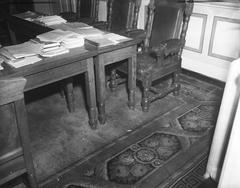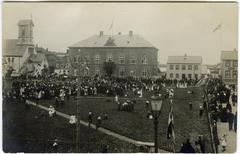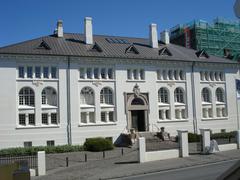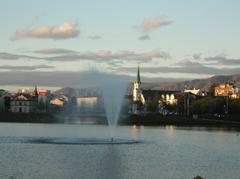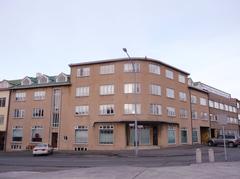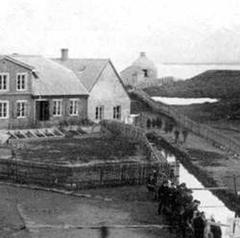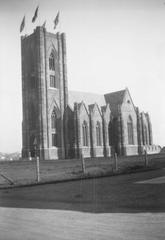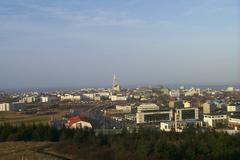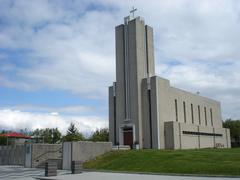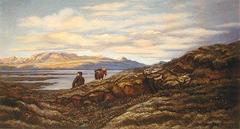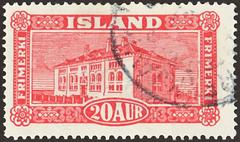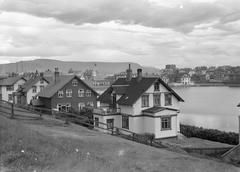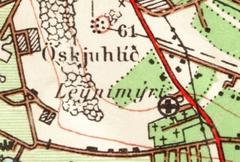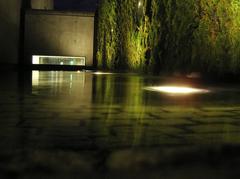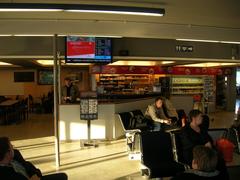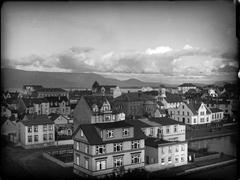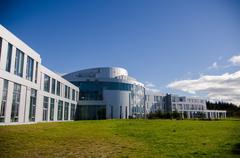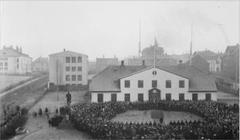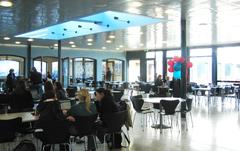Icelandic Phallological Museum: Visiting Hours, Tickets, and Guide to Reykjavík’s Most Unusual Historical Site
Date: 15/06/2025
Introduction: What Awaits at the Icelandic Phallological Museum
In the heart of Reykjavík’s vibrant Hafnartorg district stands one of Iceland’s most singular attractions: the Icelandic Phallological Museum. Founded in 1997 by historian and teacher Sigurður Hjartarson, this museum offers an extraordinary perspective on natural history, folklore, and the scientific study of the phallus—phallology. With more than 300 preserved specimens from over 100 mammalian species, as well as artistic and folkloric displays, the museum invites visitors to explore both biological diversity and the cultural symbolism of the phallus in a setting that balances education, humor, and respect (Guide to Iceland; Official Icelandic Phallological Museum).
Whether you’re a curious traveler, a scholar of anatomy, or simply looking for one of Reykjavík’s most unique experiences, the museum promises an unforgettable visit that challenges taboos and celebrates diversity in nature and culture.
Table of Contents
- Introduction
- Historical Background
- The Collection: Scientific and Cultural Significance
- Visitor Information: Hours, Tickets, Location, Accessibility
- Highlights: Notable Specimens and Exhibits
- Cultural Impact and Educational Outreach
- Practical Tips and Nearby Attractions
- Frequently Asked Questions (FAQ)
- Conclusion & Call to Action
- References
Historical Background
Origins and Founding Vision
The Icelandic Phallological Museum (Hið íslenzka reðasafn) was inspired by Sigurður Hjartarson’s academic interest in Icelandic folklore and his desire to demystify the phallus as both a biological organ and a cultural symbol. What began as a personal collection in 1974—sparked by stories of elves and trolls—soon attracted contributions from friends, family, and local institutions. Officially opening in 1997, the museum sought to establish a scholarly yet accessible space for phallological study and public exhibition (Guide to Iceland; Wikipedia; Tourist Secrets).
Growth and Development
From its modest beginnings, the museum rapidly expanded, moving to larger premises and attracting international attention. In 2011, it received its first human specimen, a milestone featured in the documentary “The Final Member.” By 2020, the museum relocated to its current Hafnartorg site, tripling its exhibition space and refining its mission as a center for research, education, and cultural dialogue (Visitors Guide; Campervan Iceland; Reykjavik Out).
The Collection: Scientific and Cultural Significance
The Icelandic Phallological Museum features the world’s most comprehensive collection of penises and penile parts, which includes:
- Marine Mammals: Over 50 specimens from whales (including sperm and blue whales), dolphins, and porpoises. The sperm whale penis, at nearly 1.7 meters, is a frequent highlight (Hafnartorg Gallery).
- Terrestrial Mammals: Specimens from reindeer, Arctic foxes, minks, rodents, and domesticated animals integral to Icelandic agriculture.
- Seals and Walruses: Represented by multiple species reflecting Iceland’s coastal ecology.
- Human Specimens: Donated voluntarily and presented with sensitivity to promote education and body positivity.
- Folklore and Mythology: Creative representations of elves, trolls, and sea monsters, bridging Iceland’s natural history and mythic past.
- Art and Casts: Includes casts of the national handball team, celebrity molds, and artworks made from animal gonads.
Each exhibit is accompanied by detailed scientific information, focusing on comparative anatomy, evolutionary biology, and cultural context (Maryland Nature Society; WhichMuseum).
Visitor Information: Hours, Tickets, Location, Accessibility
- Location: Kalkofnsvegur 2, Hafnartorg, 101 Reykjavík, Iceland (Google Maps)
- Opening Hours:
- Monday–Saturday: 10:00 AM – 6:00 PM
- Sunday: 12:00 PM – 5:00 PM
- (Check official website for seasonal or holiday updates)
- Tickets:
- Adults: ISK 2,000–3,300 (check latest price online)
- Students/Seniors: ISK 1,500
- Children under 12: Free
- Reykjavik City Card holders: 20% discount (Away to the City)
- Accessibility: Fully wheelchair accessible; multilingual signage (Icelandic, English, German); restrooms and gift shop on site.
- Getting There: Short walk from city center, served by multiple bus lines, nearby parking available (limited during peak hours).
Highlights: Notable Specimens and Exhibits
- Sperm Whale Penis: The largest specimen, nearly 1.7 meters, displayed with anatomical details (Hafnartorg Gallery).
- Human Specimens: Donated for research and public education, displayed with dignity.
- Handball Team Casts: Silver and artistic molds from the national team, blending sport and science (source).
- Folklore Section: Creative representations of legendary creatures’ phalluses, highlighting Iceland’s mythological heritage.
- Interactive Media: Multimedia panels and virtual tours for deeper engagement.
Cultural Impact and Educational Outreach
The museum plays a significant role in challenging societal taboos around sexuality and anatomy. Its scientific, non-sensationalized approach has drawn a diverse international audience—women comprised 60% of visitors in 2011—and continues to foster open dialogue about body image, gender, and societal norms (adventures.is; reykjavikcars.com).
Workshops, lectures, and themed events cover topics from reproductive biology to phallic symbolism in art and literature. Multilingual guides and audio tours enhance accessibility for all visitors (introducingiceland.com).
Practical Tips and Nearby Attractions
- Plan 60–90 minutes for your visit to fully explore exhibits and interactive features.
- Combine with other sites: Harpa Concert Hall, National Museum of Iceland, Hallgrímskirkja, and the Old Harbour are all nearby.
- Gift Shop & Café: Enjoy phallic-themed treats and souvenirs.
- Best Times: Visit early or late in the day to avoid crowds (Epic Iceland).
- Etiquette: Maintain a respectful, open-minded attitude—photography is allowed (no flash).
Frequently Asked Questions (FAQ)
Q: What are the opening hours?
A: Typically 10:00 AM – 6:00 PM Mon–Sat; 12:00 PM – 5:00 PM Sun. Check the official website for updates.
Q: How much are tickets?
A: Adults: ISK 2,000–3,300; discounts for students/seniors; children under 12 free; Reykjavik City Card holders get a 20% discount.
Q: Is the museum family-friendly?
A: The museum is suitable for all ages, but parental discretion is advised for younger children due to anatomically explicit, though non-erotic, content.
Q: Are guided tours available?
A: Daily at 11:00 AM and 3:00 PM; book in advance for groups.
Q: Is photography allowed?
A: Yes, but please avoid using flash.
Conclusion & Call to Action
The Icelandic Phallological Museum stands at the crossroads of science, education, and cultural storytelling, making it an essential stop for anyone exploring Reykjavík’s historical sites. Its unique blend of zoology, folklore, and humor ensures an engaging and enlightening experience. For the latest visitor information, ticket prices, and events, consult the official museum website.
Enhance your Icelandic adventure by downloading the Audiala app for curated guides, exclusive audio tours, and insider tips. Follow us and the museum on social media for updates on exhibitions and special events. Discover a different side of Icelandic culture—plan your visit today!
References
- Guide to Iceland: The Icelandic Phallological Museum
- Official Icelandic Phallological Museum
- adventures.is: Icelandic Phallological Museum
- WhichMuseum: Icelandic Phallological Museum
- Visitors Guide: The Icelandic Phallological Museum
- Wikipedia: Icelandic Phallological Museum
- Tourist Secrets: A Trip to the Penis Museum in Iceland
- Campervan Iceland: Iceland Phallological Museum
- Reykjavik Out: Phallological Museum
- Maryland Nature Society: The Icelandic Phallological Museum
- Away to the City: Best Museums in Reykjavik
- Hafnartorg Gallery: The Icelandic Phallological Museum
- Secret Attractions: Reykjavik Lesser-Known Museums
- Epic Iceland: Phallological Museum
- themonthofbulgogiandsushi.com: Reykjavik Day 2
- introducingiceland.com: Phallological Museum
- reykjavikcars.com: Penis Museum
- TrovenTrip: Weird & Unique Icelandic Phallological Museum
- Visitors Guide: The Icelandic Phallological Museum
